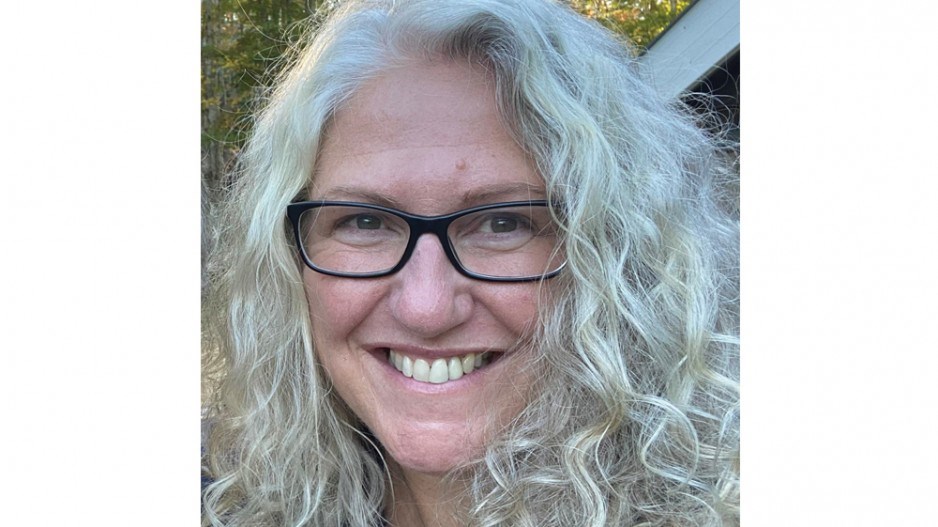When Tectonic Metals (TSX-V:TECT, OTCQB:TETOF) recently named Allison Rippin Armstrong chair of its board of directors, the company branded the appointment as a sign of environmental, social and corporate governance (ESG) in action.
There is, after all, still a dearth of women heading mining companies or occupying board room chairs, so Rippin Armstrong’s appointment as chairperson could be considered a diversity and inclusion checkmark.
But more important than her gender – from an ESG standpoint – is her background. With a degree in biology and environmental science – not engineering or geology – her career has been on the environmental compliance side of the mining industry.
“Someone said to me yesterday, ‘Allison, how many women are chairs of boards?’” she said in an interview with BIV. “I said, ‘I don’t know.’ But I said, ‘I’ll tell you what’s even less is the number of people who have an ESG background, male or female.’”
Earlier in her career, she worked on behalf the Yellowknives Dene First Nation in environmental permitting. Her job was to get mining companies to jump through all the hoops to mitigate impacts on the environment and First Nations’ interests.
She then worked for BHP Group (NYSE:BHP) at the Ekati Diamond Mine as the compliance specialist, and then from 2013 to 2016 worked as vice-president of sustainability for Kaminak Gold Corp., which developed the Coffee Gold project in the Yukon.
Eira Thomas, who was an executive there, was also CEO of Lucara Diamond (TSX:LUC). Thomas brought Rippin Armstrong on board at Lucara in 2018 to help create its ESG strategy when it was developing the Karowe diamond mine in Botswana.
ESG has become something of a buzzword at mining conferences. Big mining companies have been increasingly taking it seriously, because investors are increasingly looking for real action on environmental, social and governance matters, not just lip service.
But even junior exploration and development companies, like Tectonic and Skeena Resources (TSX,NYSE:SKE), are starting to place greater emphasis on ESG matters.
As Rippin Armstrong points out, compliance covers those things that a company is, by law, required to do.
“ESG is what a company does that goes beyond that,” she said. “We talk about good corporate stewards, and we talk about maximizing opportunities.”
While social pressure from environmental groups and Indigenous people initially forced companies to start taking social and environmental responsibility more seriously, increasingly it’s investors and banks that are demanding it.
“I think it’s the investment community wanting to see they’re investing in companies that are being good corporate stewards,” she said.
One example of ESG in action was the employment policies that Lucara adopted for its Karowe diamond mine, she said.
“One of the things that was amazing to me, going to Botswana, is Lucara has achieved at the Karowe diamond mine 99% local employment.”
Canadian mining companies have a long way to go before they can boast those kinds of numbers when it comes to employing local Indigenous people, but they are trying.
More development companies like Tectonic and Skeena Resources are working with local Indigenous people as partners. Rippin Armstrong said she thinks it’s only a matter of time before companies begin to appoint First Nations to their boards of directors.
“If you think about it from the perspective of the First Nations, if the mine is being built in your traditional territory, wouldn’t it make sense that someone from your nation would have a seat at the board of an operating mine in your traditional territory?” she said. “I think you’re going to start to see that happening.”
Tectonic is focused on gold mining in Alaska in traditional Doyon territory. Doyon Limited, an Alaska Native Regional Corporation, is a partner and investor in Tectonic Metals’ Alaskan projects.
Closer to home, Skeena Resources is working to restart the highly productive Eskay Creek gold mine, and the company’s partner in that project is the Tahltan First Nation.
Skeena Resources has signed a formal agreement that essentially makes the Tahltan a regulator and takes a “reverse permitting” approach. The B.C. government is still the ultimate environmental regulator, but there will be a parallel regulatory process involving the Tahltan.
“Before we’re making submissions for permits to the province or the feds, depending on the nature of the permit, there is an engagement process with the Tahltan,” said Justin Himmelright, vice-president of sustainability for Skeena Resources.
The partnership with the Tahltan checks the “governance” and “social” aspects of ESG and can be expected to make the environmental review and permitting processes smoother and quicker.
In a more typical process, the submissions are made by the company to the government as part of an environmental review, and the province then consults with First Nations. Skeena is reversing that process with its agreement with the Tahltan.
“We’re getting our authorization from Tahltan ahead of the authorizations from the province,” Himmelright said.
“In the approach that we’re taking, there’s efficiencies there, in that the government process at the tail end should be much, much quicker because we’ve done the engagement with Tahltan, and their views on the submission accompany the submission.”
As part of that new approach, Skeena Resources agreed to give up some of its mineral claims for the creation of a new conservation zone, making an area that is culturally sensitive to the Tahltan off-limits to exploration and resource extraction.
The Tahltan have a $5 million equity stake in Skeena Resources, which plans to invest about $500 million to restart the Eskay Creek mine by the end of 2024.
“It makes very good business sense, to our way of thinking, for Skeena,” Himmelright said of the new partnership with the Tahltan. “There’s a lot of very solid business arguments related to project certainty. In addition to that, it’s the right thing to do. This is the direction of history, and we want to be on the right side of history.” •




